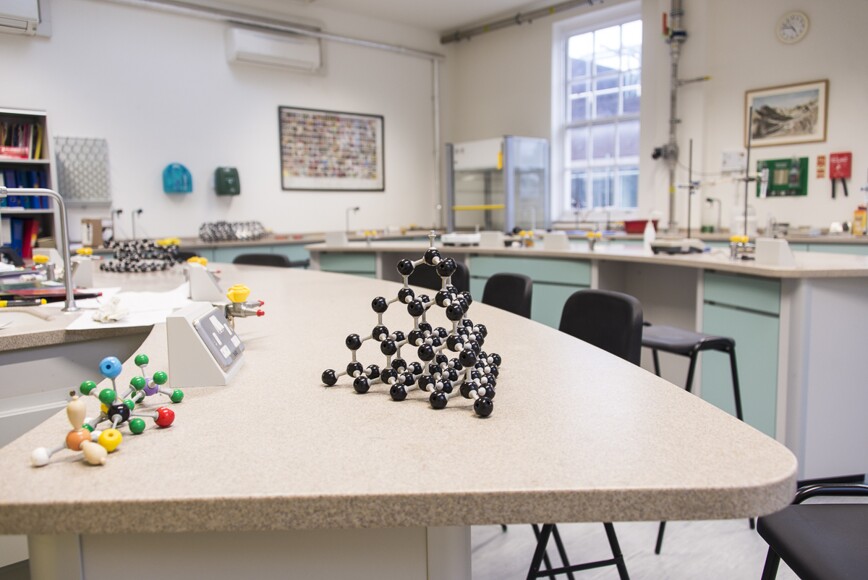School labs are dynamic spaces that cater to diverse scientific disciplines, each with its specific set of requirements. Designing spaces tailored to the specific needs of Chemistry, Biology, Physics and STEM is essential for creating conducive environments for scientific inquiry.
Understanding the distinct requirements of each discipline allows school members, architects and designers to create lab spaces that not only enhance safety and efficiency but also foster innovation in research and education.
Chemistry Labs
Chemistry labs require meticulous attention to detail in design. These spaces have a greater need for chemical-resistant surfaces, fume cupboards, gas outlets and sinks. Adequate storage for glassware and Bunsen burners is essential. Safe chemical storage and emergency showers are crucial for the safety of students. Sometimes local extraction systems might be required.
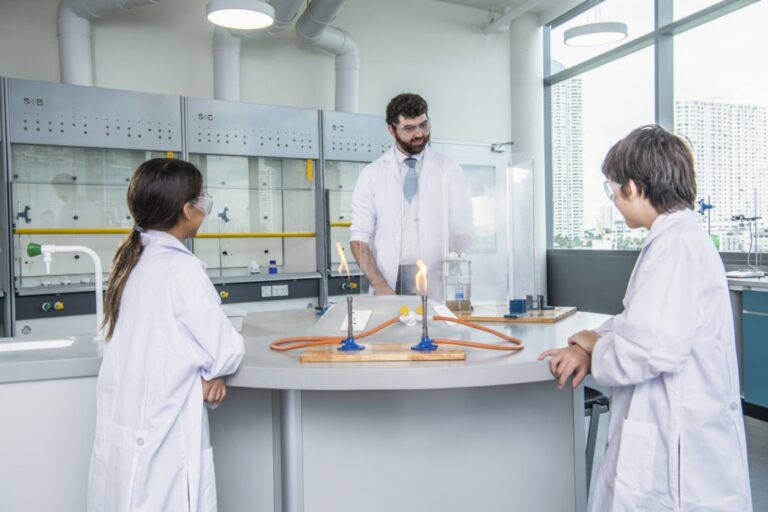
Biology Labs
In Biology labs, the focus shifts to accommodating delicate instrumentation like microscopes. Worksurfaces must withstand cleaning, and there’s a trend toward integrating living walls, greenhouses, or vivariums. Providing ample worksurface space and sinks with sufficient size and depth for biology experiments is essential.
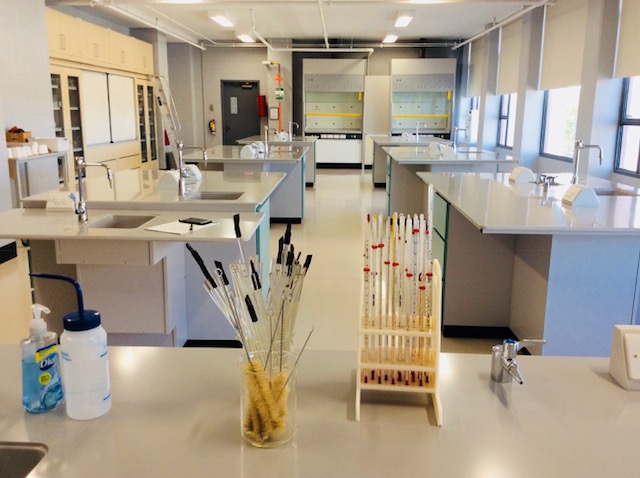
Physics Labs
Physics labs require large, dry and clear work surfaces. There is a bigger demand for electrical sockets, as Physics experiments often involve complex equipment requiring constant power. Sinks and gas outlets are seldom used in Physics experiments. Movable tables offer flexibility, creating expansive surfaces for lengthy apparatus or student projects.
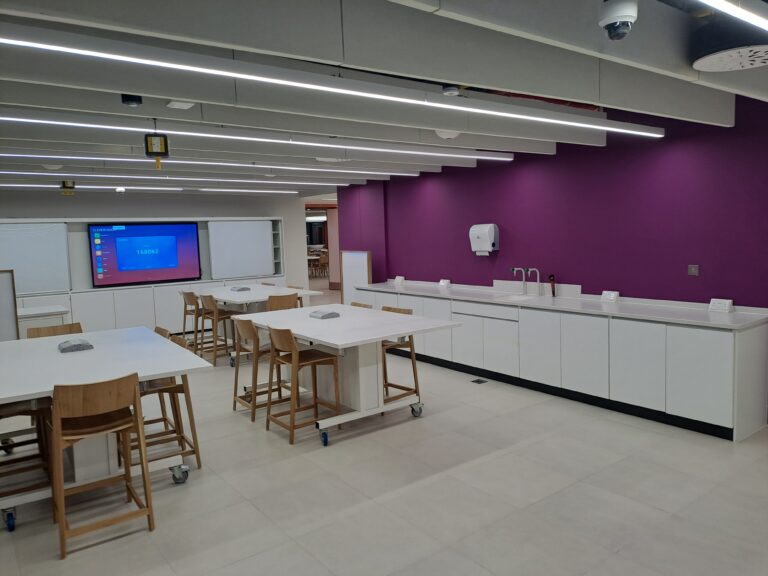
STEM Labs
STEM labs encompass a holistic approach, combining elements of Chemistry, Biology, and Physics. The design must facilitate collaboration and interdisciplinary research and the flexibility to adapt to a wide range of experiments and projects, connecting Science, Technology, Engineering and Mathematics.
Ample storage, adaptable worksurfaces and sufficient space to accommodate 3D printers, scanners, educational robots and other large equipment are required.
Access to technology is prioritized, creating an environment conducive to technology-enhanced learning with interactive whiteboards, PCs, laptops, or tablets.
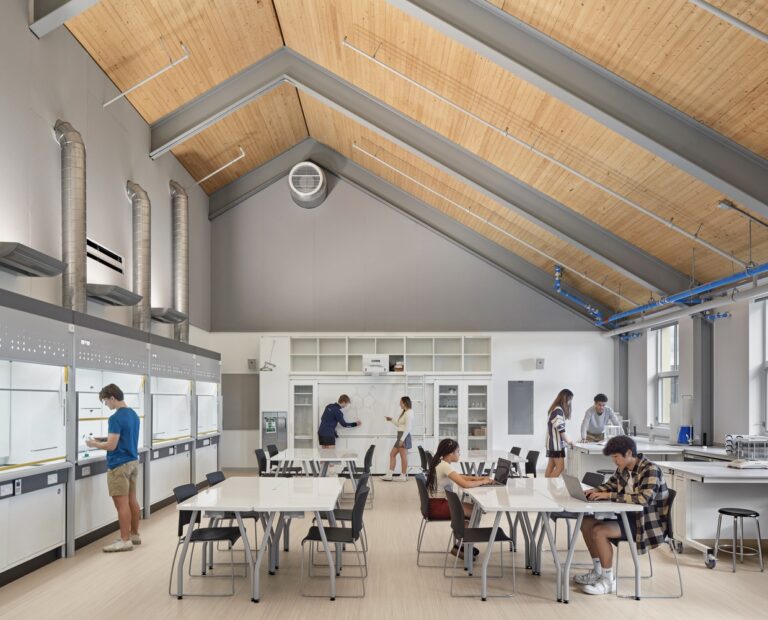
Designing innovative lab spaces with meticulous attention to detail, tailored to the distinctive requirements of specific subjects, not only elevates safety and functionality but also empowers students to excel. By prioritizing adaptability, collaboration and technology integration, the labs can transform into into dynamic hubs for scientific inquiry, providing an environment where students can truly thrive.
Get in touch with us for a free of charge design consultation for Chemistry, Biology, Physics and STEM labs via sales@splusb.co.uk or fill in the contact form on our website. To discover our previous work for schools across the globe, please explore our Case Studies.

